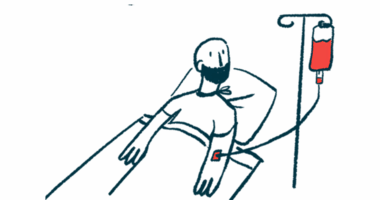New Data Support Long-term Effectiveness of Preventive EHL Treatment in Hemophilia A and B

New data from clinical studies suggests that long-term preventive treatment of severe hemophilia A with Eloctate, or severe hemophilia B with Alprolix, increased quality of life and reduced annual bleeding rates.
The data was presented in Melbourne, Australia at ISTH 2019, the 27th Congress of the International Society on Thrombosis and Haemostasis, by Sobi and Sanofi, the companies that manufacture those treatments.
Both Eloctate (rFVIIIFc) and Alprolix (rFIXFc) are extended half-life blood clotting factors (EHLs) — clotting factors that have been engineered to stay longer in the body. This allows them to be taken as prophylaxis (preventively) rather than being used “on-demand” when there is an emergency.
The presented data came from two Phase 3 clinical trials: ASPIRE (NCT01454739) and B-YOND (NCT01425723). These were open-label extension studies in patients of all ages. Data for all participants in the studies has been reported previously; this data focuses on the subgroup of patients in each study with severe disease.
In ASPIRE, 70 people with severe hemophilia A had switched from an on-demand treatment to prophylactic Eloctate. Of these, 67 (96%) stayed on the treatment for at least six months; the median duration of treatment was 4.8 years. Dosing was stable, though the interval at which people received doses tended to increase (from a median of 3.5 days at the beginning of treatment to five days at the end of follow-up).
On prior, on-demand therapy, the median annual bleeding rate was 30.0. On Eloctate, it was 1.5, and this was stable over time. Additionally, 29% of patients experienced decreased joint pain.
In B-YOND, 52 people with severe hemophilia A had switched from an on-demand treatment to prophylaxis with Aprolix, and 50 (96%) of these stayed on the treatment for at least six months. The median duration of treatment was 3.6 years, and dosing and dosing interval were stable over time.
The median annual bleeding rate among these participants decreased from 24.2 on on-demand treatment to 2.0 on prophylaxis.
According to a press release from Sobi, in both studies, quality of life was improved, specifically “in relation to areas such as sports, leisure and physical health.”
Sobi also conducted a survey of 37 European physicians, from five different countries, asking about their experience treating hemophilia patients with these medications. In total, the physicians provided feedback on 113 patients switched from prophylaxis to Eloctate, and 36 patients switched from prophylaxis to Alprolix.
According to Sobi, most of those doctors responded that EHLs were useful for controlling disease and for improving patients’ quality of life and active lifestyle, as well as allowing for more personalized treatment options and improved adherence to treatment (less disease burden).






